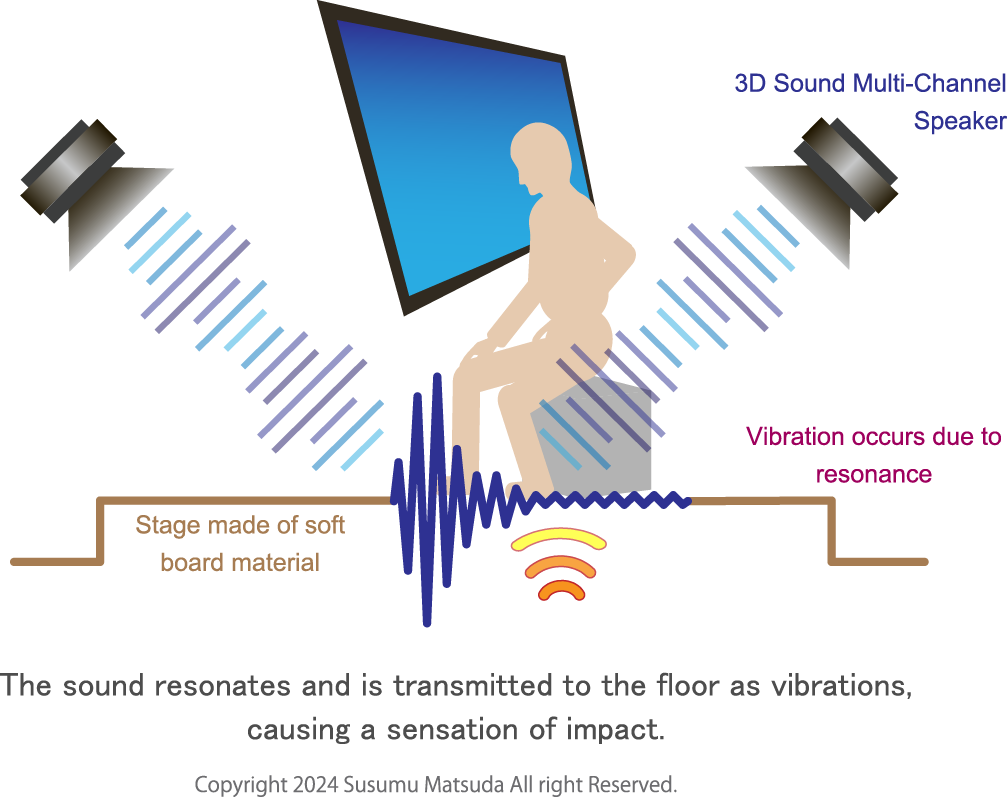Vehicle simulators using virtual reality (VR) require the use of a six-degree-of-freedom motion base. Typical examples include flight simulators for skill training that reproduce the behavior of an aircraft and driving simulators for skill training that reproduce the vertical and horizontal gravitational acceleration of a car. Another advantage of a motion base is that it can reproduce acceleration by reproducing six degrees of freedom (XY axis: vertical and horizontal movement, Z axis: up and down movement, XYZ axis: rotational movement). However, a motion base is a device that uses servo motors, and users are concerned about the cost-effectiveness, including ease of maintenance. The high cost of using a motion base is an obstacle to its introduction.

The cost-effectiveness of the motion base is an issue, but I attended an exhibition held in the United States showcasing game technology and realized that it was possible to reproduce the functions of the motion base in a simplified manner. I visited a booth that introduced the latest in sound technology. The booth offered a submarine simulator using 3D sound. You can operate the joystick to simulate surfacing and diving. The operator sits on a floor stage with a built-in seat and controls the simulator while looking through the windows of the submarine reproduced on the monitor. When you push the joystick of the submarine all the way in, it will dive and land on the bottom of the sea. When the submarine hits the bottom, it will be reproduced as if it had hit a rock, and at the same time, a loud sound of the collision is reproduced. The poor chair floor resonates with the sound and you can feel the vibration of the floor. At this moment, I learned that the feeling of floating and impact can be felt even with vibration alone. The vibration caused by the resonance of sound is an analogue up and down movement. The feeling of floating cannot be reproduced by vibration, but I thought that the brain creates the feeling of floating in accordance with the movement of the image based on past experience. We hypothesized that impacts are actually transmitted through vibrations, and that once the trigger for the brain to imagine the sensation is pulled, the human brain will imagine the phenomenon that leads to the impact based on past experience. Based on this, we decided to develop a motion base that is limited to high-speed vertical movement.